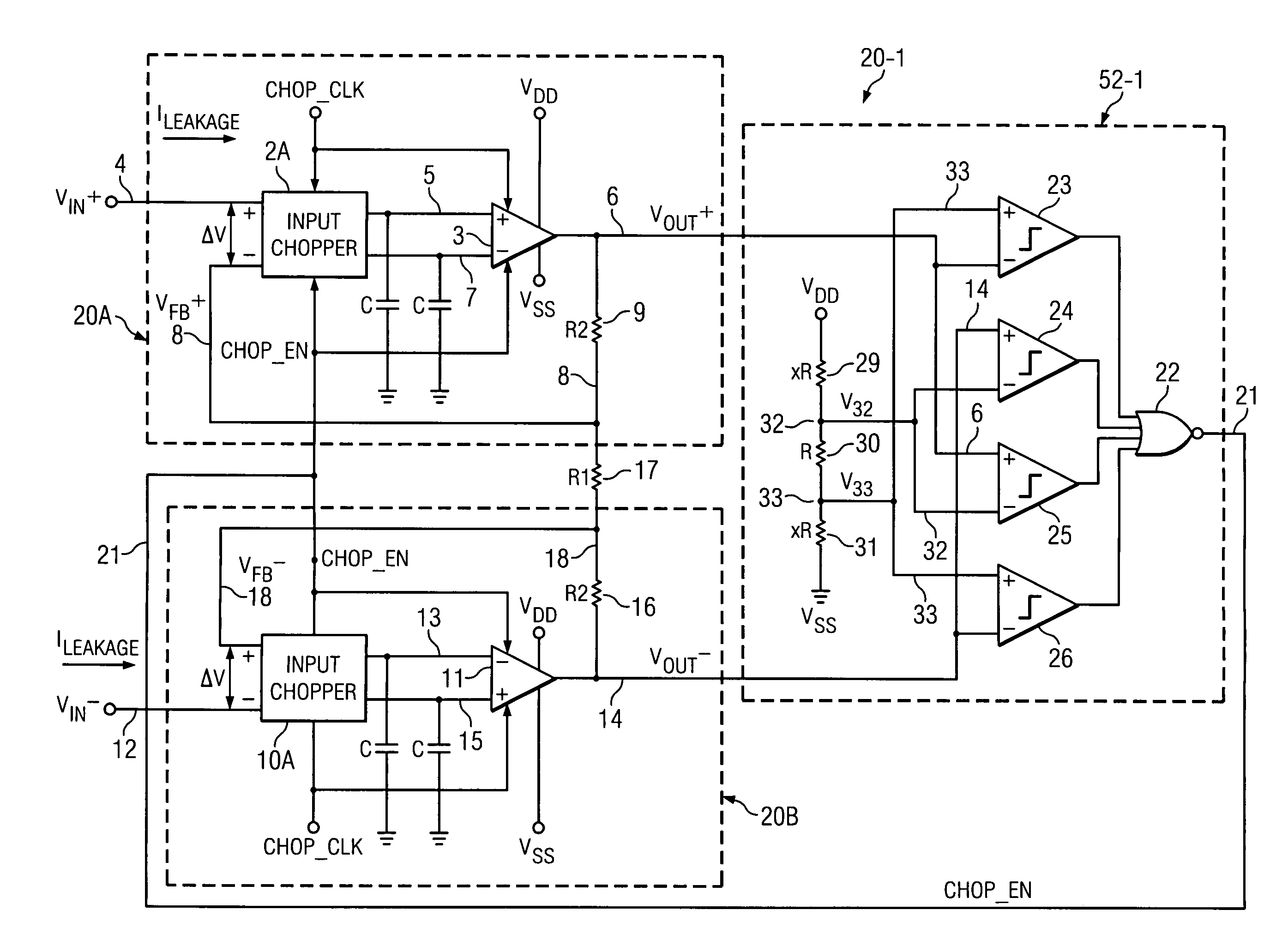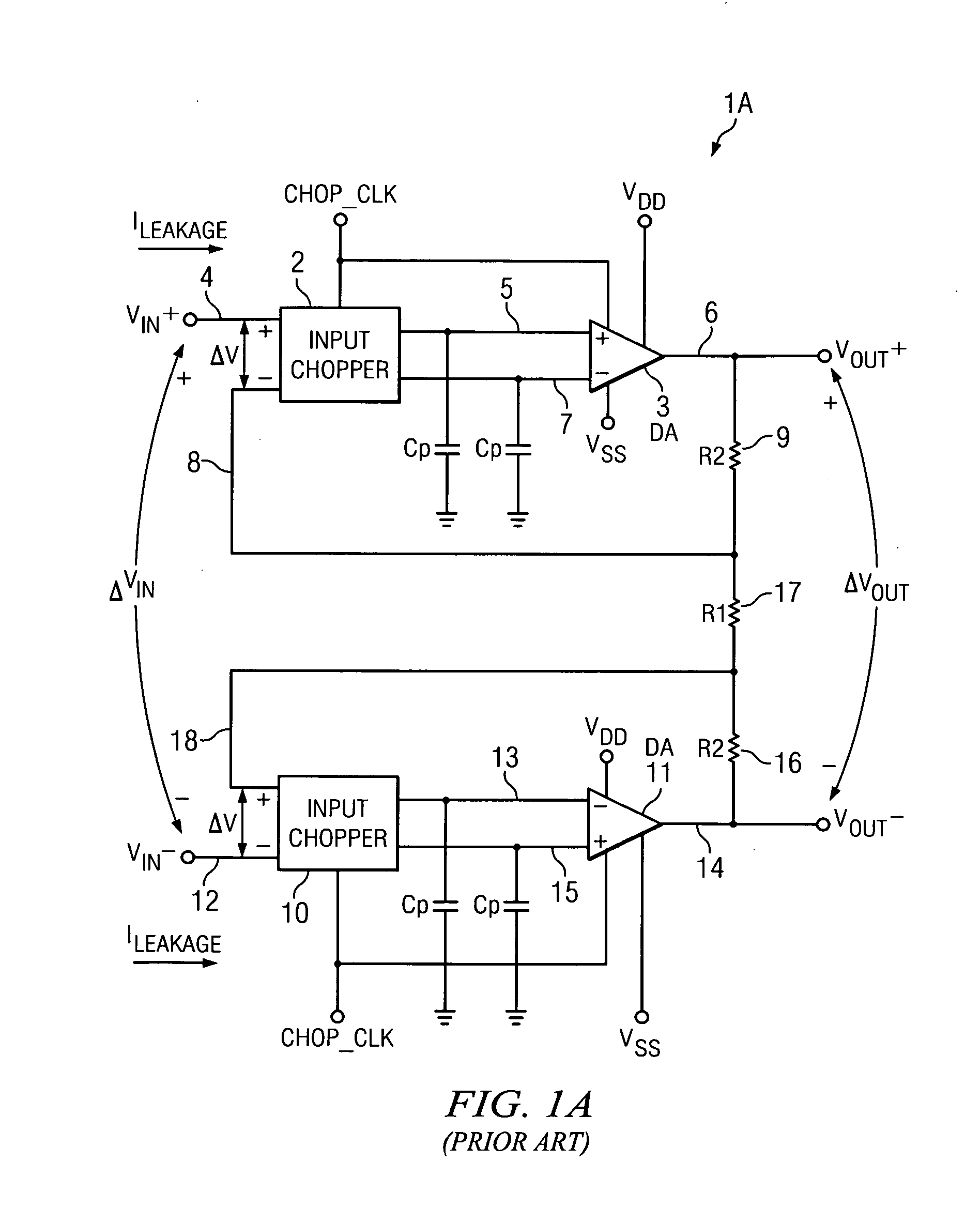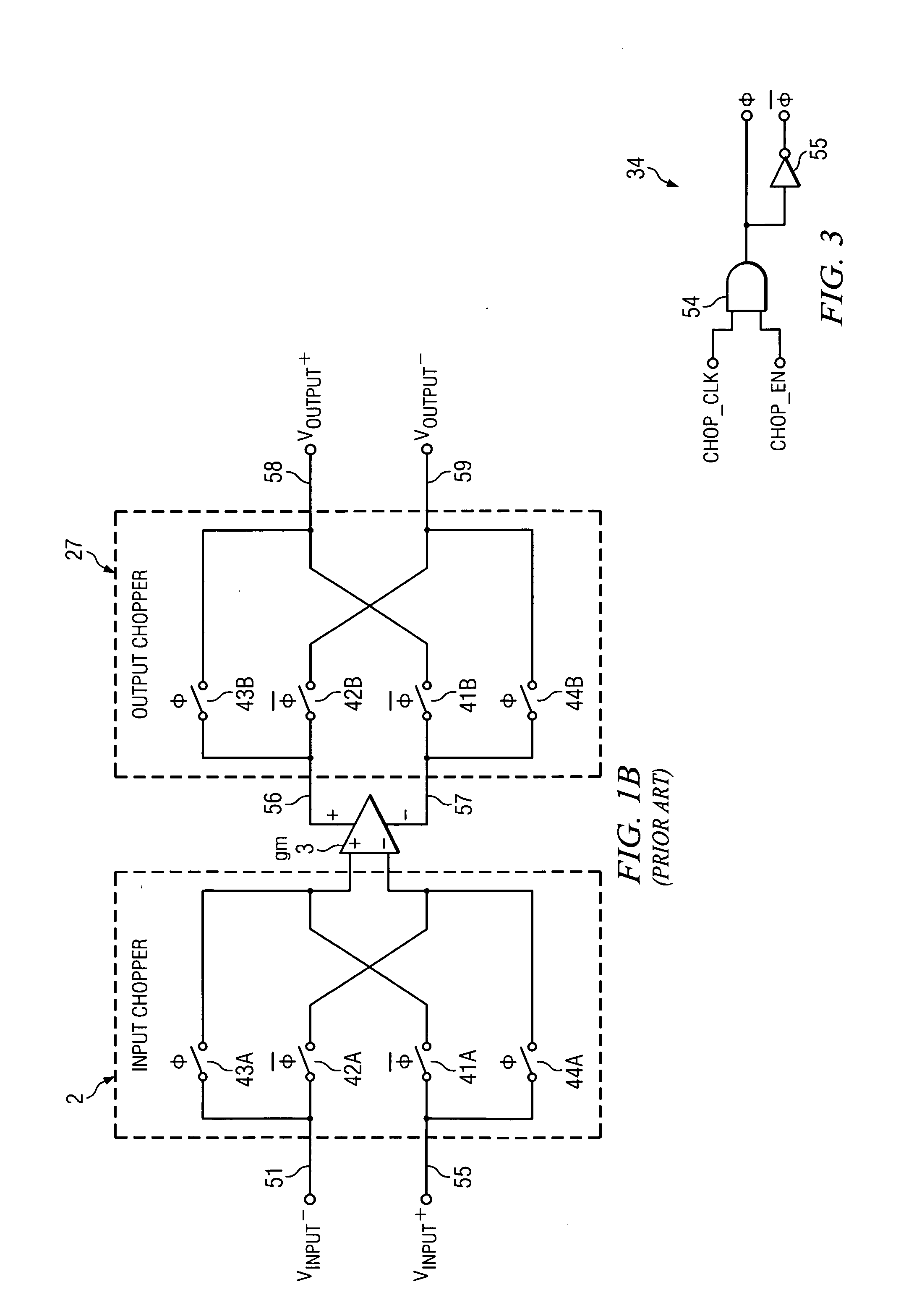Circuit and method for reducing input leakage in chopped amplifier during overload conditions
a technology of amplifier and input leakage, which is applied in the direction of amplifiers, amplifiers with semiconductor devices/discharge tubes, electrical devices, etc., can solve the problems of affecting the reliable detection of the disconnection of the electrode from the human body, affecting the reliability of the detection of the disconnection of the electrode, and the foregoing technique of preventing amplifier overload/saturation conditions by reducing the amplifier gain
- Summary
- Abstract
- Description
- Claims
- Application Information
AI Technical Summary
Benefits of technology
Problems solved by technology
Method used
Image
Examples
Embodiment Construction
[0044]Referring to FIG. 2, chopper-stabilized instrumentation amplifier (INA) 20-1 includes an “upper” chopper-stabilized amplifier 20A including input chopper 2A, amplifier 3, and an output chopper 27A. INA 20-1 also includes a “lower” chopper-stabilized amplifier 20B including input chopper 10A, amplifier 11, and output chopper 28A. Amplifiers 3 and 11 each include an output chopper circuit that may be essentially the same as output chopper 27 in previously described FIG. 1B. Input chopper 2A also may be implemented essentially the same as in input chopper 2 in FIG. 1B, and depending on the particular application requirements, the combination of input chopper 2 and amplifier 3 in FIG. 2 may be the same as the input chopper, folded-cascode amplifier, and output chopper shown in FIG. 4 of the previously mentioned article “A Low Noise, Low Residual Offset, Chopped Amplifier for Mixed Level Applications” by M. Sanduleanu, A. van Tuigal, R. Wasasenaar, and H. Walling a. That is, input ...
PUM
 Login to View More
Login to View More Abstract
Description
Claims
Application Information
 Login to View More
Login to View More - R&D
- Intellectual Property
- Life Sciences
- Materials
- Tech Scout
- Unparalleled Data Quality
- Higher Quality Content
- 60% Fewer Hallucinations
Browse by: Latest US Patents, China's latest patents, Technical Efficacy Thesaurus, Application Domain, Technology Topic, Popular Technical Reports.
© 2025 PatSnap. All rights reserved.Legal|Privacy policy|Modern Slavery Act Transparency Statement|Sitemap|About US| Contact US: help@patsnap.com



